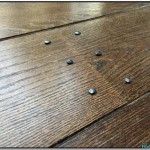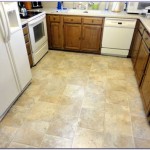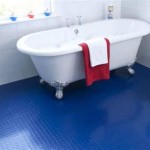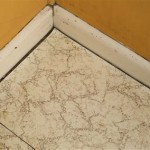Red Birch Flooring Cost: A Comprehensive Guide
Red birch flooring is a popular choice for many homeowners due to its warm, inviting aesthetic and relative affordability compared to some other hardwood options. However, understanding the true cost requires considering a variety of factors beyond just the price per square foot of the wood itself. This article provides a comprehensive overview of the elements that contribute to the overall cost of red birch flooring, assisting in informed decision-making regarding both budget and selection.
Knowing the different aspects of red birch flooring will have a big impact on the overall budget of a homeowner. Installation costs, material selection, and the type of finish all create a wide range of prices for red birch flooring. Red birch flooring can be a great way to make a room have more character. The flooring's color and consistency range from pale white to reddish-brown making it a unique flooring type that fits a variety of home aesthetics.
Understanding the Base Material Cost
The primary factor influencing the cost of red birch flooring is, naturally, the price of the wood itself. This price is typically quoted per square foot and can vary depending on several conditions.
Grade of the wood is a factor of the price point for wood. Higher grades, such as select and better, will have fewer knots and imperfections, resulting in a more uniform and aesthetically pleasing appearance. These grades command a higher price than lower grades, such as common grades, which may feature more pronounced knots, color variations, and imperfections. Understanding the acceptable level of imperfection is key to aligning budget with aesthetic preferences.
The width and thickness of the boards also influence the overall cost. Wider planks often carry a premium due to the greater amount of wood required to produce them. Similarly, thicker boards will generally be more expensive, particularly if they are solid hardwood, as opposed to engineered. The style of board can change the dimensions of the room and also what style the room will have as well.
Whether the flooring is solid hardwood or engineered hardwood significantly impacts the price. Solid red birch flooring is made from a single piece of wood and is typically more expensive than engineered options. Engineered red birch flooring consists of a thin veneer of red birch bonded to a core of plywood or other composite material. While engineered flooring may be less expensive, the quality of the veneer and the core material will influence its durability and longevity. With the rise of affordable options for flooring, it is common for homeowners to opt for engineered hardwood flooring since it often resembles solid hardwood flooring.
Geographic location can also influence the cost of red birch flooring. Prices may vary depending on the availability of red birch in a particular region and the transportation costs associated with bringing the wood to the point of sale. Buying local is one way that homeowners can lower costs for this type of flooring.
Finally, market demand and seasonal fluctuations can impact prices. Periods of high construction activity or times when red birch is particularly popular may result in increased prices. Homeowners that purchase this type of flooring during these market peaks will find they are paying premiums.
Accounting for Installation Expenses
Beyond the cost of the materials, installation is a significant expense that must be factored into the overall budget. Installation costs can vary depending on several factors.
Preparation of the subfloor is one of the first steps in installing flooring. The existing subfloor must be level, clean, and dry before installation can begin. Any necessary repairs or leveling can add to the overall cost. In some instances, self leveling can be done by the homeowner, but professional installation is often necessary for complex repairs or projects.
The method of installation also influences the cost. The three main types of installation are nail-down, glue-down, and floating. Nail-down installations are typically used for solid hardwood flooring and require specialized tools and expertise. Glue-down installations also require specialized adhesives and careful application. Floating installations, where the planks are clicked or locked together without being directly attached to the subfloor, are often less expensive to install.
The complexity of the installation site affects the amount of labor needed for the installation. Rooms with unusual shapes, multiple doorways, or staircases will require more time and skill to install flooring, increasing the labor costs. Simple square rooms can be completed in a fraction of the time as complex rooms needing detailed cuts and measurements. In some instances, hiring a general contractor is needed for the most optimal results.
Geographic location also influences labor costs. Labor rates vary from region to region, so it's important to obtain quotes from multiple installers in any particular area. It is also important to obtain quotes from multiple contractors with experience in the installation in order to create a more accurate budget. Labor costs for flooring have been steadily increased with the rising costs of living.
Removal and disposal of old flooring, should that be required, can add to the overall cost. Some installers include this service in their quote, while others charge an additional fee. When possible, negotiating the price for the removal and disposal of any previous flooring during the quote process can help lower overall costs.
Additional services, such as the installation of baseboards or quarter-round molding, can also contribute to the total cost. These finishing touches are necessary to complete the look of the floor and should be included in the installation budget.
Considering Finishing and Maintenance Costs
Once the red birch flooring is installed, finishing and ongoing maintenance costs must be considered to ensure the floor remains in optimal condition and a longer lifespan.
The type of finish applied to the flooring impacts its durability, appearance, and cost. Polyurethane finishes are a popular choice due to their durability and resistance to scratches and stains. Oil-based finishes provide a more natural look and feel but may require more frequent maintenance. Water-based finishes are low in VOCs and are considered more environmentally friendly. The costs and benefits of each type of finish are worth weighing before beginning the installation process.
The number of coats of finish applied also affects the overall cost and durability of the flooring. Multiple coats provide greater protection and longevity, but they also increase the labor and material costs. Often, opting for multiple coats of a finish will offset costs for future maintenance of the flooring from inevitable wear and tear.
Regular cleaning and maintenance are essential to preserving the appearance and longevity of red birch flooring. This includes regular sweeping or vacuuming to remove dirt and debris, as well as occasional damp mopping with a pH-neutral cleaner specifically designed for hardwood floors. Avoid using harsh chemicals or abrasive cleaners, as these can damage the finish. While small steps such as these will increase the lifespan of red birch flooring, it is important to follow the manufacturer's recommendations for cleaning and maintenance to avoid voiding the warranty.
Periodic refinishing may be necessary to restore the floor's appearance and protect the wood. The frequency of refinishing depends on the amount of traffic the floor receives and the type of finish applied. Refinishing involves sanding down the existing finish and applying new coats, which can be a significant expense. However, properly maintaining the floor can minimize the need for frequent refinishing.
Protecting the floor from scratches and dents is also important. Using furniture pads under chair and table legs, as well as placing rugs in high-traffic areas, can help to minimize wear and tear. Addressing the floor with the proper care is important to avoid the need for replacement too early.
Repairing damaged areas. Replacing individual planks is often possible if damages occur. Repairing damages will preserve the integrity of the floor and can restore damages from water, scratches, or dents.
Proper humidity control will influence how the floor ages over time. Hardwood flooring can expand and contract with changes in humidity, so maintaining a consistent humidity level in the home can help prevent warping or cracking. Homeowners will find that the benefits from following these humidity levels will lead to savings over the lifespan of their flooring.
In summary, the cost of red birch flooring encompasses the material costs, installation expenses, and ongoing maintenance costs. Careful consideration of these factors will allow one to make an informed decision and create a more accurate budget for your flooring project. Thoroughly reviewing the grade of wood, method of installation, and type of finish applied can lead to the best overall balance between cost, aesthetics, and durability.

Red Birch Hardwood Flooring

Red Birch Solid Prefinished Character Planet Hardwood

Lauzon Special Red Birch Solid 3 1 4 In By Wood Floors

Birch Red Vermont Hardwoods

Birch Red Vermont Hardwoods

Paramount Solid Classics Red Birch Natural Flooring Market

Unfinished Red Birch Hardwood Floor Refinishing

Red Birch Hardwood Flooring

Birch Red Vermont Hardwoods

Red Birch Hardwood Flooring
Related Posts








